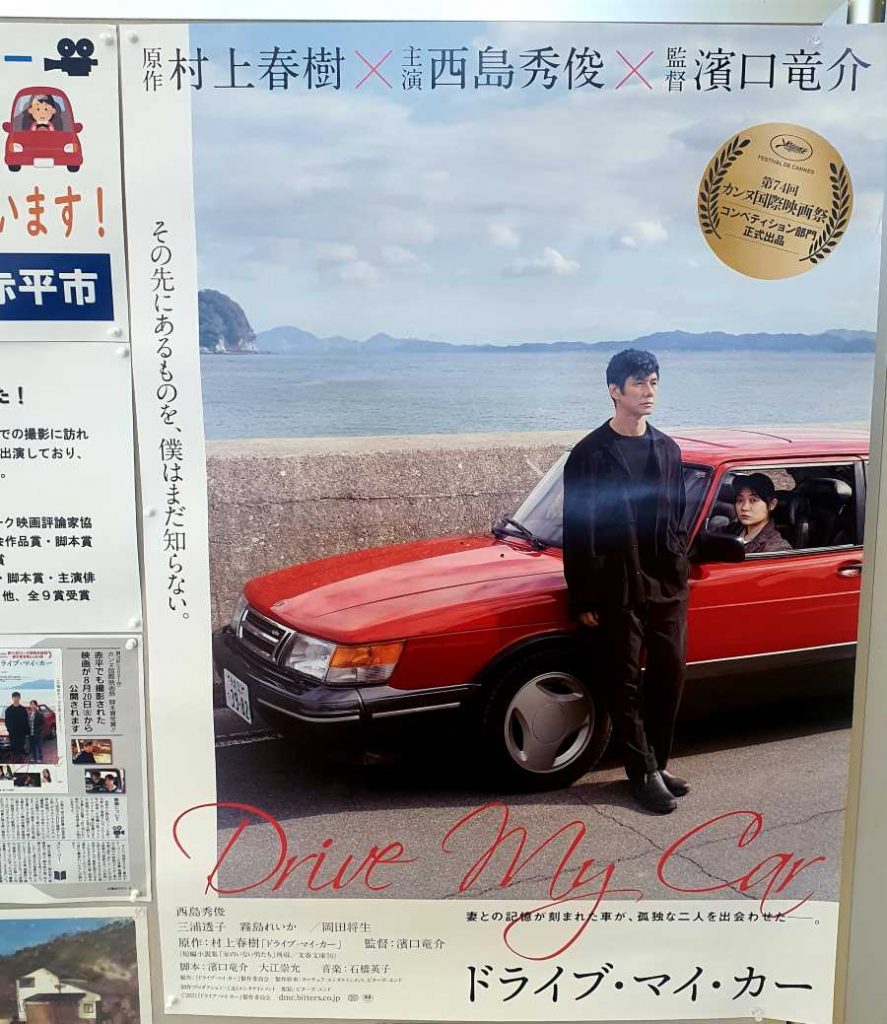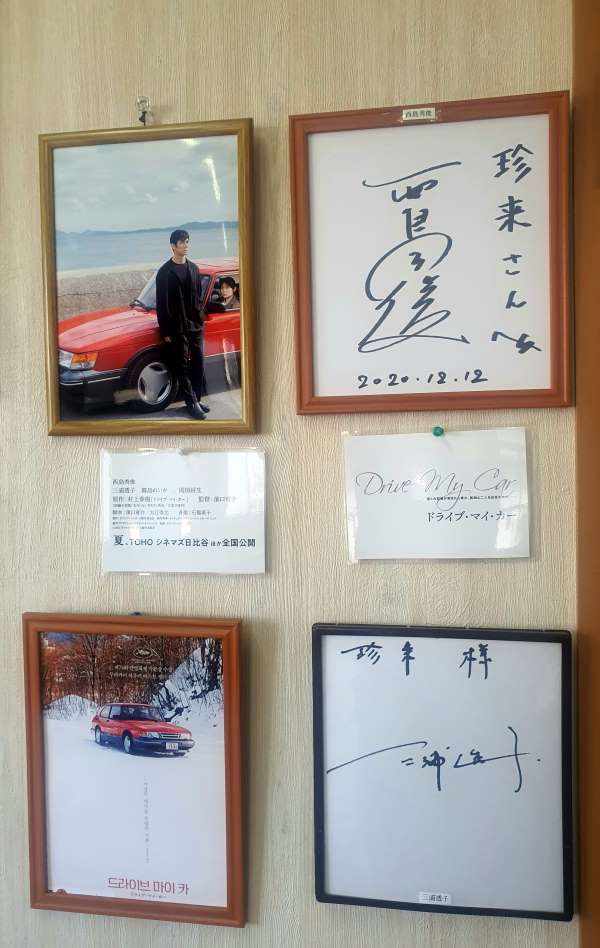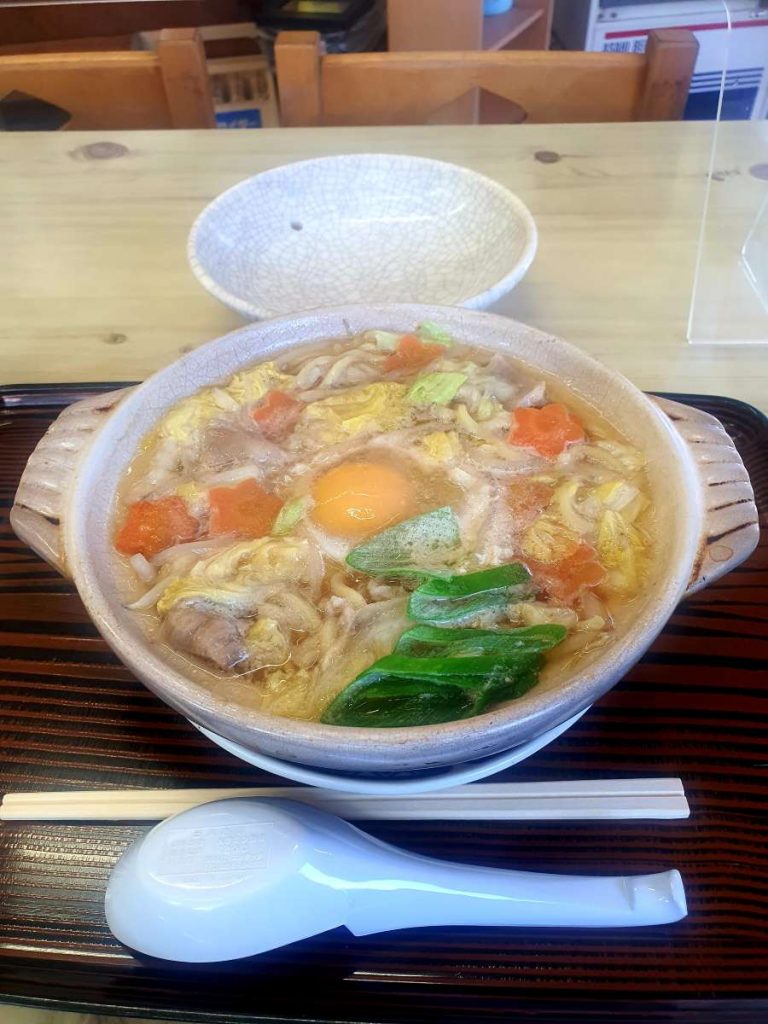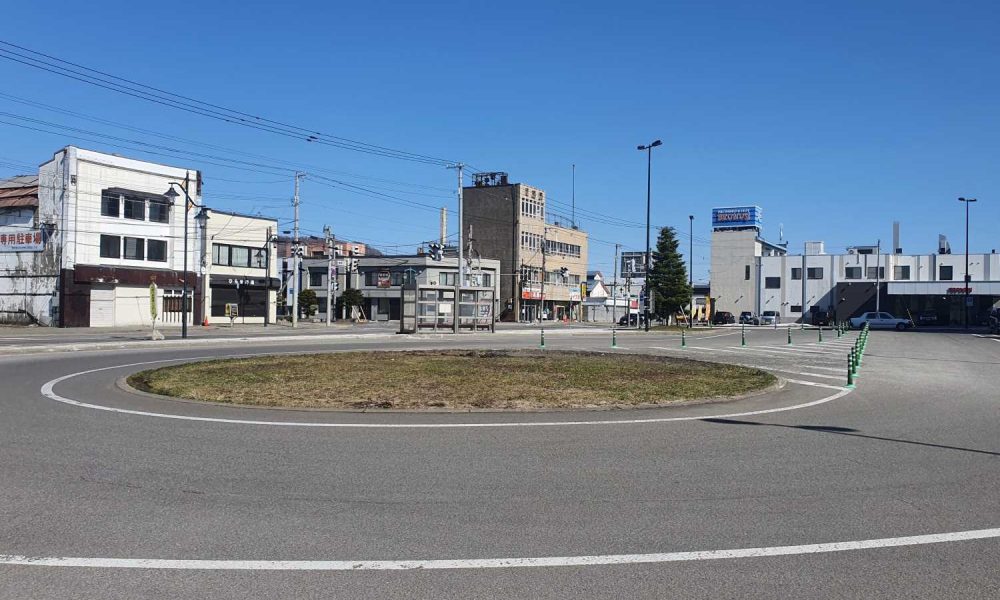No red car drives around the corner. In fact, there are no cars in sight on the wide roads of Akabira on a Saturday afternoon.
The former mining town in central Hokkaido has seen better days. The last coal mine closed in 1994, the population has fallen to around 10,000, houses are empty, while a handful of shops struggle to survive.
Recently, however, the Oscar-winning film drive my car gives the small town a little piece of world fame.
A young couple walks down the street past the oversized Akabira station building where a single taxi waits for customers. They seem genuinely thrilled to be deep in the beyond and eagerly take pictures of the scenery. Her pretty dress and fashionable jacket stand out against the empty, calm space that marks the city center.
Akabira is as far from Oscar glory as one can imagine. “It’s an empty place,” says Misaki Watari (Toko Miura)the young driver in the film when the owner of the red Saab, Yusuke Kafuku (Hidetoshi Nishijima), asks him to drive him from Hiroshima to his childhood home in Hokkaido. It’s a three-hour Japanese road movie that doesn’t have a car chase.
The unlikely pair eventually leave, revealing dark personal secrets along the way. Sharing a tender moment on a snowy slope in Akabira, they both face the ghosts of their past.
-

Akabira, Hokkaido (Photo by Agnes Tandler) -

Movie poster and clippings in Akabira station (Photo: Agnes Tandler)
Inside Akabira Station, posters and magazine clippings about the film show new local pride. Never mind that the city’s movie scenes are not a strong incentive to visit Akabira. They imagine the two characters in a harsh and unforgiving landscape that reflects their loneliness and mental struggle.
In fact, Akabira looks a bit like Finland in Aki Kaurismäki’s films, where the actors rarely smile, smoke constantly and travel through frozen landscapes – only with more sunshine.
The Ramen Embassy
But beggars cannot choose. Akabira doesn’t have much else to offer.
The local ramen shop Chinrai has become a sort of unofficial embassy for drive my car. Inside the 1980s Showa-style building, owner Yasuhiro Sasaki serves old-fashioned ramen dishes that are a good meal for miners and farmers: Tonkatsu (pork chop) ramen and “gan gan ramen ‘, hot ramen that comes in a clay pot with a raw egg on top.
-

Film-related autographs at the Chinrai ramen shop in Akabira, Hokkaido (Photo: Agnes Tandler) -

Try Akabira’s hearty ramen. (Photo: Agnes Tandler)
When drive my car director Ryusuke Hamaguchi and his crew spent four days shooting the film’s scenes in December 2020, Sasaki fed the crew free tonkatsu ramen. It wasn’t the first time the owner had been involved in a film production. The store was featured in the Japanese travel diary “How Do You Like Wednesday”, a TV show that ran from 1996 to 2002.
But drive my car is on another level. When the film won the Oscar for Best International Feature Film in late March 2022, the ramen shop hosted Akabira’s official Oscars after-party.
“Since the movie came out, more people have been visiting my shop,” confirms Sasaki. He put up posters and autographs, as well as a sign celebrating the latest Oscar win. He happily tells a group of visitors from Sapporo how the film crew ate at his house and how they enjoyed their stay in Hokkaido.
Meanwhile, locals in work clothes and rubber boots silently eat their lunch, not caring too much about the town’s newfound fame.
A little headache
From the ramen shop, it takes about 20 minutes on foot to reach the Zuriyama observation deck, 200 meters above sea level. The path leads through the fields around the abandoned coal plant, with the mine’s rusty shaft tower in the background.
There are 777 steps to the top of Zuriyama. The view from here in the valley below shows the town of Akabira stretching along the banks of the Sorachi River between mountain ranges still covered in snow on the horizon.
A little further down is where drive my car was filmed. The location itself is prohibited, mainly due to its unstable terrain.
Zuriyama is not a natural elevation, but a man-made hill of coal mine debris that has accumulated over years of mining. This method of spoil disposal carries risks of landslides and erosion. Therefore, the last thing members of the Akabira Tourism Association want is visitors scrambling up a slope of coal debris while trying to spot the exact location in the film.
Akabira’s touch of stardom certainly comes with a bit of a headache. City officials are trying to find other ways to entertain moviegoers, but so far few proposals have come forward.
However, the Akabira Mining Museum, so far the only cultural offering in the city, is receiving more and more visitors. Unfortunately, there is no one with a red 30-year-old Saab 900 and a young female driver.
RELATED:
Author: Agnes Tandler (Akabira Reporter)
Find more essays and reports from Agnes Tandler for JAPAN Forward here.

